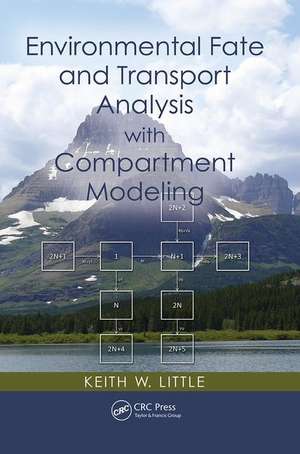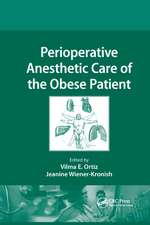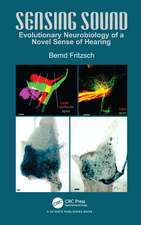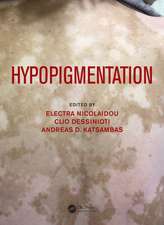Environmental Fate and Transport Analysis with Compartment Modeling
Autor Keith W. Littleen Limba Engleză Paperback – 29 mar 2017
Add this Easy-to-Use Approach to Your Environmental Modeling Toolbox
This numerical technique enables readers to easily develop the equations that describe complex environmental problems by assembling the equations out of compartmental building blocks. The compartments may describe spatial subunits of single- or multi-environmental media, and the way one hooks them together implicitly provides the dimensionality of the problem. With this approach, assembling the equations to describe chemical fate and transport in a three-dimensional, multimedia system is fundamentally no more challenging than a one-dimensional, single-medium problem.
Go Beyond "Black Box" Modeling with the Flexible GEM Software
The book includes access to the Generic Environmental Model (GEM), a new software package developed by the author. This software implements the compartment approach based on user-prepared input files and solves the resulting mathematical equations. It allows readers to solve linear, nonlinear, and steady-state problems and offers four methods for solving dynamic problems. Each solution technique is reviewed, along with the error properties and the criteria for avoiding or minimizing numerical errors. The book also describes solution techniques and the underlying mathematical theory for solving nonlinear systems.
Compartment Modeling from the Ground Up, Made Accessible to Non-Mathematicians
A user-friendly introduction to environmental compartment modeling for the beginning modeler, this is also a useful resource for the experienced modeler. It combines a reference on compartment modeling with a user’s guide to the GEM. Throughout, the GEM is used to illustrate the theory with numerous examples, while the theoretical discussions illuminate the GEM’s functionality.
Preț: 461.03 lei
Preț vechi: 542.39 lei
-15% Nou
Puncte Express: 692
Preț estimativ în valută:
88.22€ • 92.53$ • 73.44£
88.22€ • 92.53$ • 73.44£
Carte tipărită la comandă
Livrare economică 01-15 aprilie
Preluare comenzi: 021 569.72.76
Specificații
ISBN-13: 9781138074132
ISBN-10: 1138074136
Pagini: 244
Ilustrații: Approx. 374 equations; 23 Tables, black and white; 63 Illustrations, black and white
Dimensiuni: 156 x 234 x 13 mm
Greutate: 0.45 kg
Ediția:1
Editura: CRC Press
Colecția CRC Press
ISBN-10: 1138074136
Pagini: 244
Ilustrații: Approx. 374 equations; 23 Tables, black and white; 63 Illustrations, black and white
Dimensiuni: 156 x 234 x 13 mm
Greutate: 0.45 kg
Ediția:1
Editura: CRC Press
Colecția CRC Press
Public țintă
Academic and Professional Practice & DevelopmentCuprins
Introduction. GEM User’s Guide. Compartment Approach, Transport Mechanisms, and Boundary Conditions. Source and Sink Terms. Solution Techniques for Steady-State Problems. Solution Techniques for Dynamic Problems. Appendix: Introduction to Matrices and Matrix Operations. Index.
Notă biografică
Keith W. Little, Ph.D., P.E., is a consulting engineer specializing in the development and application of mathematical modeling and systems analysis methods to environmental engineering and water resources problems. Dr. Little earned a Ph.D. from the University of North Carolina at Chapel Hill where, in 1985, he was awarded the Bernard Greenberg Award for Excellence in Doctoral Research. This research was the genesis of the GEM software used to illustrate the concepts in this book. Since then, the GEM software has evolved in functionality and application and has been used to support risk assessment-based decision making at the U.S. Environmental Protection Agency (EPA). Dr. Little has enjoyed a 30-year career in environmental engineering and research, including 15 years as a research environmental engineer at RTI International, where he led the environmental modeling group. He has authored numerous technical reports and articles for peer-reviewed journals. He has also been active in various professional organizations and was president of the Colorado section of the American Water Resources Association in 1995. He is currently an independent consultant in Raleigh, North Carolina.
Recenzii
Keith Little’s book provides an excellent introduction to compartmental modeling that is well written and accessible to a wide range of environmental professionals. The text includes sufficient rigor to ensure effective and accurate model application, while keeping the material focused on real-world, practical applications. The accompanying GEM software is the only readily available compartmental model with complete flexibility and extendibility in the model setup. This powerful tool can be used literally to simulate an infinite range of potential modeling scenarios without changes to the underlying source code. Dr. Little’s book and GEM software are welcome contributions to the environmental modeling field.
—Michael Lowry, RTI International, North Carolina, USA
This is an excellent integration of numerical methods with environmental modeling. The compartment technique discussed is broadly applicable to a wide range of environmental problems and media. Well written. The mathematics and derivations are nicely detailed and straightforward to follow. Clearly the best discussion of stability and numerical dispersion available for environmental modelers. Dr. Little’s book covers critical topics that too often receive only a passing mention in more traditional environmental modeling texts.
—Daniel Gallagher, Department of Civil and Environmental Engineering, Virginia Polytechnic Institute and State University, USA
This book is clearly written. It strives to give the uninformed reader an introduction to the topic of environmental modeling and it succeeds. Not only does it motivate and explain the basic concepts of compartmental modeling but it also discusses some of the natural extensions such as incorporating sink and source terms. Also, it gives insight into some of the issues that may arise when using various numerical methods. ... With this book as a resource, the modeler should be well informed on how to approach a problem and issues they should be aware of when analyzing or solving the model.
—Ellen Peterson, Carnegie Mellon University, Pennsylvania, USA
—Michael Lowry, RTI International, North Carolina, USA
This is an excellent integration of numerical methods with environmental modeling. The compartment technique discussed is broadly applicable to a wide range of environmental problems and media. Well written. The mathematics and derivations are nicely detailed and straightforward to follow. Clearly the best discussion of stability and numerical dispersion available for environmental modelers. Dr. Little’s book covers critical topics that too often receive only a passing mention in more traditional environmental modeling texts.
—Daniel Gallagher, Department of Civil and Environmental Engineering, Virginia Polytechnic Institute and State University, USA
This book is clearly written. It strives to give the uninformed reader an introduction to the topic of environmental modeling and it succeeds. Not only does it motivate and explain the basic concepts of compartmental modeling but it also discusses some of the natural extensions such as incorporating sink and source terms. Also, it gives insight into some of the issues that may arise when using various numerical methods. ... With this book as a resource, the modeler should be well informed on how to approach a problem and issues they should be aware of when analyzing or solving the model.
—Ellen Peterson, Carnegie Mellon University, Pennsylvania, USA
Descriere
This book explains how to use the compartment approach to estimate the distribution of chemical contaminants in environmental media in time and space. This powerful numerical technique enables readers to easily develop the equations that describe complex environmental problems by assembling the equations out of compartmental building blocks. The book offers a user-friendly guide to compartment modeling. It also includes the Generic Environmental Model (GEM) software package, which implements the techniques described. Written to be accessible to beginning environmental modelers, the book is a valuable reference for experienced modelers as well.















